The document discusses the evolution of machine-readable cataloging (MARC) since its introduction in the 1960s, highlighting its historical significance in library data management and its growing obsolescence in the internet age. It emphasizes the need for a transition to the Bibliographic Framework (BIBFRAME) to better connect bibliographic data with the web and to enhance resource sharing and accessibility. The transition to BIBFRAME is presented as a substantial modernization effort that will change cataloging practices and library technologies.
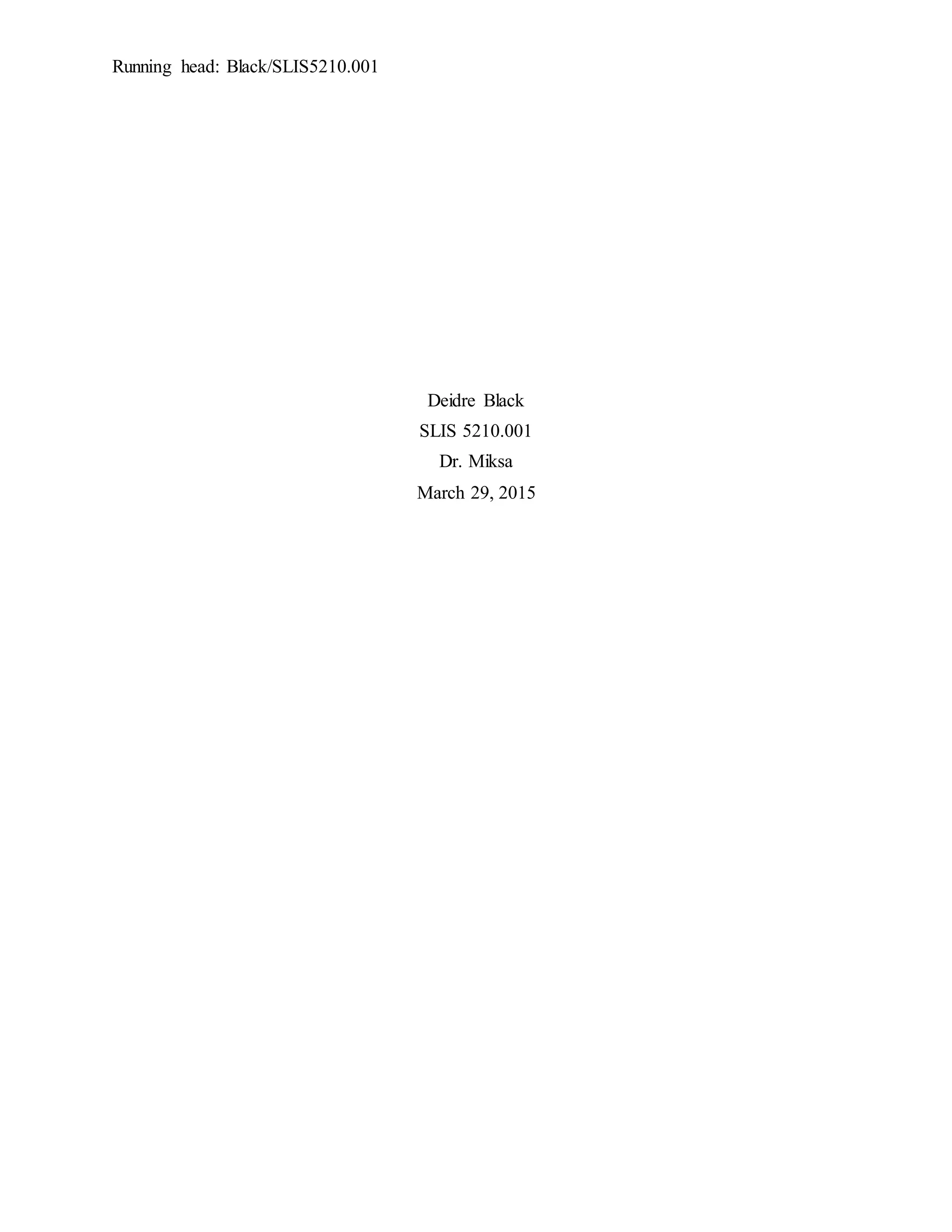
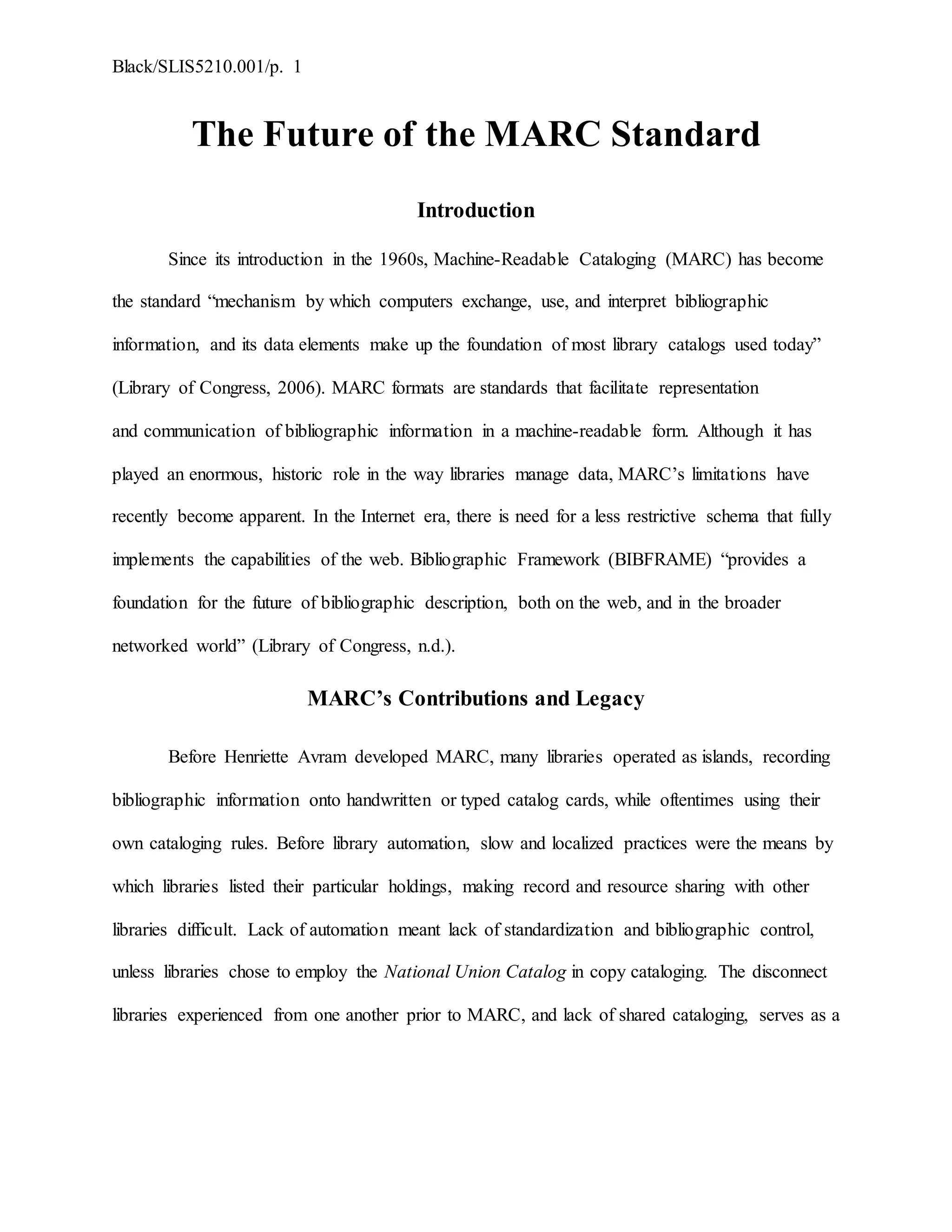
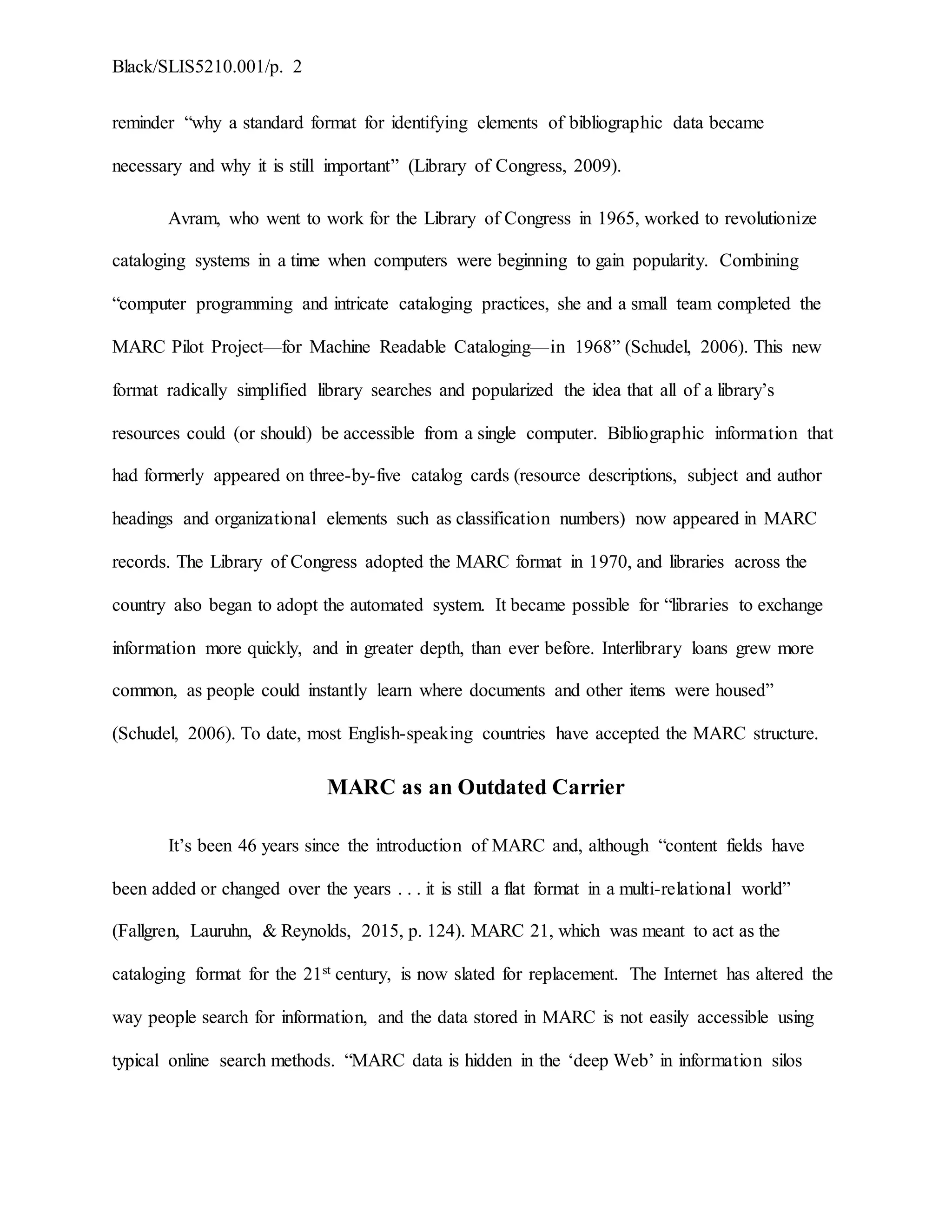
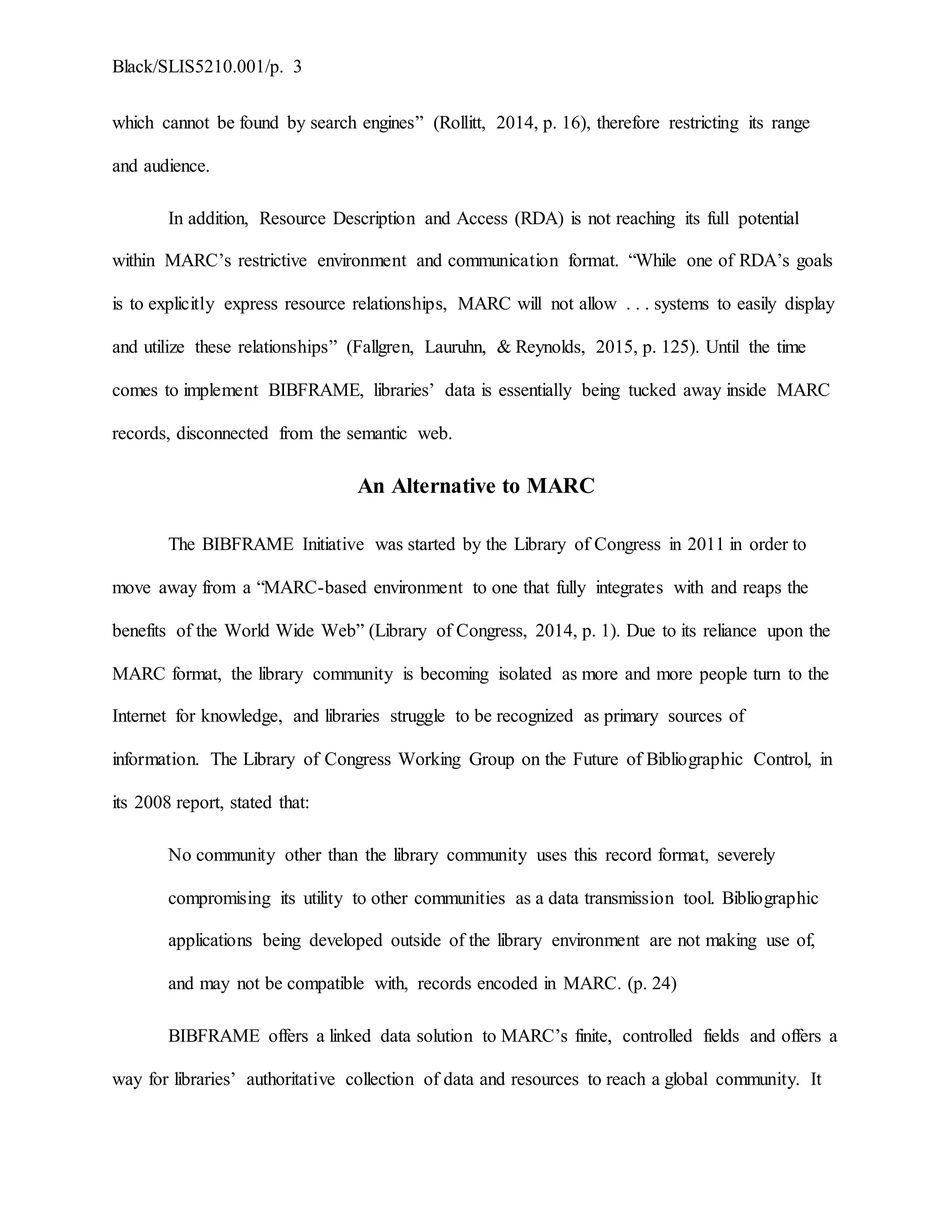
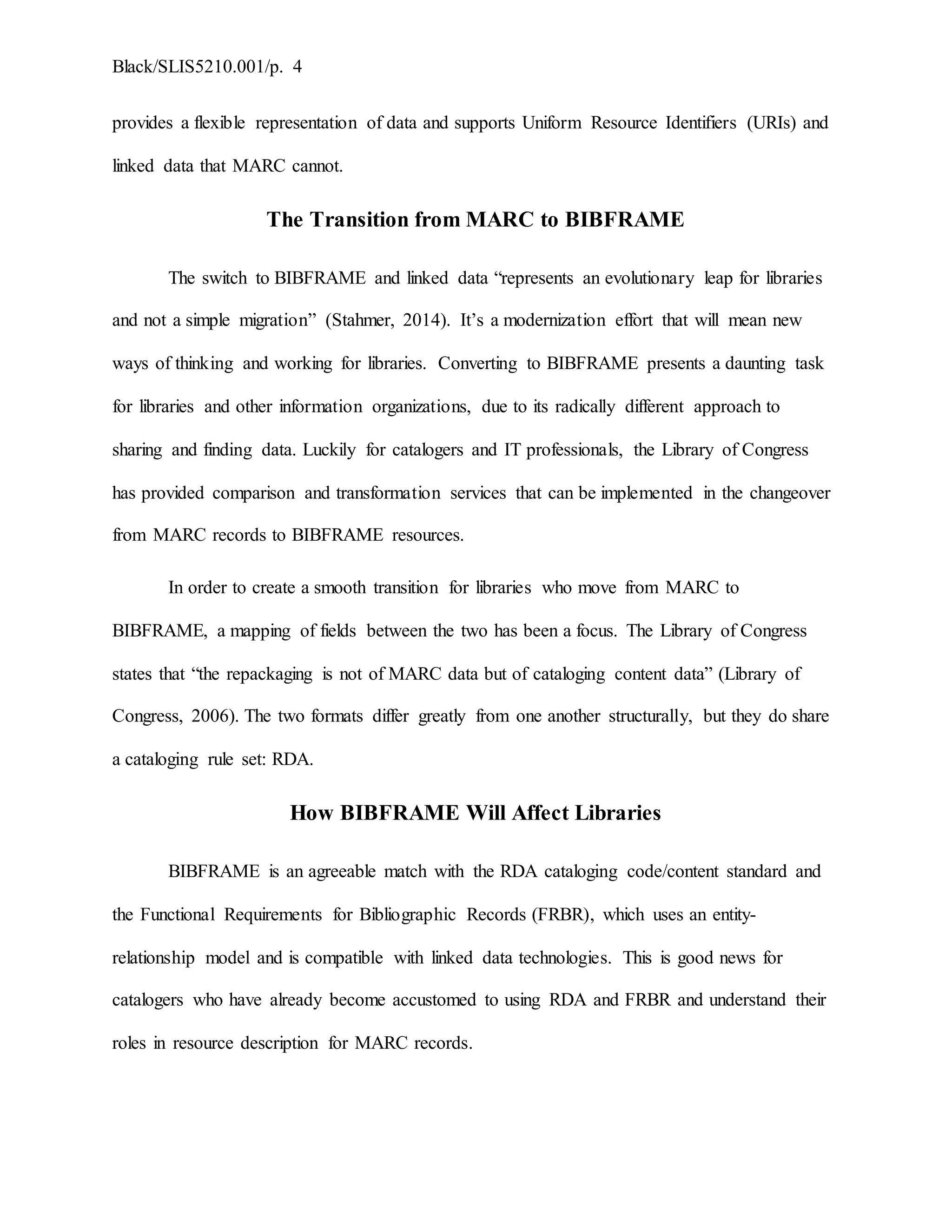


![Black/SLIS5210.001/p. 7
REFERENCES
Avram, H. D., & McCallum, S. H. (1980). Directions in library networking. Journal of the
American Society for Information Science, 31, 438-444.
Calame, A. P. (2000). Hitting the MARC: Database structure for library automation. School
Libraries in Canada, 20(1), 5-6.
Fallgren, N., Lauruhn, M., Reynolds, R. R., & Kaplan, L. (2015). The missing link: The evolving
current state of linked data for serials. Serials Librarian, 66(1-4), 123-138.
doi:10.1080/0361526X.2014.879690
Fritz, D., & Fritz, R. (2003). MARC21 for everyone: A practical guide. Chicago, IL: American
Library Association.
Library of Congress. (n.d.) Bibliographic Framework Initiative. Retrieved from
http://www.loc.gov/bibframe/
Library of Congress. (2006). Frequently asked questions (FAQ). Retrieved from
http://www.loc.gov/marc/faq.html#definition
Library of Congress. (2009). What is a MARC record, and why is it important? Retrieved from
http://www.loc.gov/marc/umb/um01to06.html#part5
Library of Congress. (2014). BIBFRAME: Why? What? Who? Retrieved from
http://www.loc.gov/aba/pcc/bibframe/bibframe-and-pcc.html
OCLC [OCLCVideo]. (2013, September 26). Transforming role - text to data: The GW
BIBFRAME [Video file]. Retrieved from https://www.youtube.com/watch?v=MN2BsIaMGag](https://image.slidesharecdn.com/blackresearchpaper-150821171157-lva1-app6892/75/BIBFRAME-8-2048.jpg)
![Black/SLIS5210.001/p. 8
Rollitt, K. (2014). MARC21 to Bibframe: outcomes, possibilities and new directions. New
Zealand Library & Information Management Journal, 55(1), 16-19.
Schudel, M. (2006). Henriette Avram, ‘Mother of MARC,’ dies. Retrieved from
http://www.loc.gov/loc/lcib/0605/avram.html
Stahmer, C. (2014, June 25). It’s Complicated! [Web log post]. Retrieved from
http://www.lib.ucdavis.edu/bibflow/its-complicated/
The Library of Congress Working Group on the Future of Bibliographic Control. (2008). On the
record [PDF document]. Retrieved from http://www.loc.gov/bibliographic-future/news/lcwg-
ontherecord-jan08-final.pdf](https://image.slidesharecdn.com/blackresearchpaper-150821171157-lva1-app6892/75/BIBFRAME-9-2048.jpg)